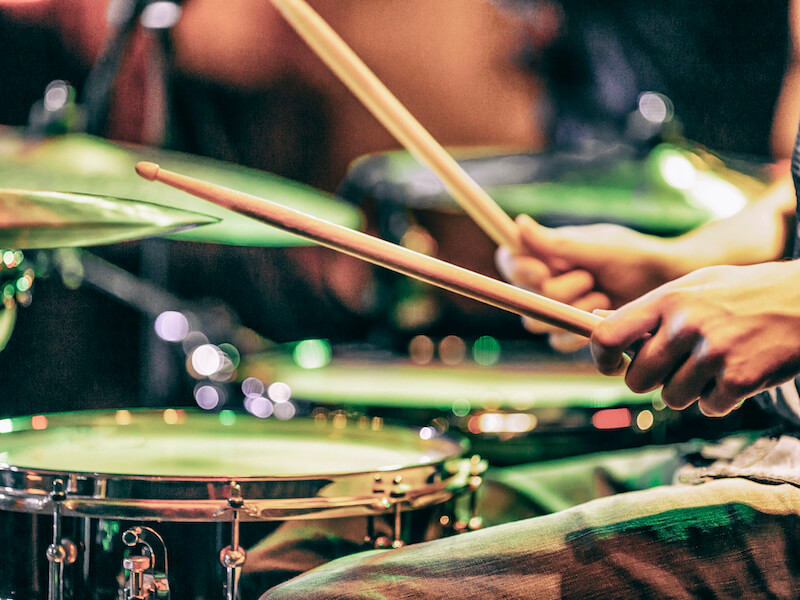
Musicians are awesome! They bring so much pleasure to our lives with their songs. But music is a lot more powerful when it’s loud, and that can be a hearing hazard. Since musicians subject themselves to loud music on a daily basis, their hearing is at an increased risk of being damaged.
As you grow older, you’ll still want to be capable of enjoying your favorite songs whether you’re a musician or not. The key to having a long successful career, for musicians, is protecting their hearing. Hearing protection is also key to a lifetime of musical fulfillment for everyone.
Music is surprisingly loud
Most people would say that a jet engine is really loud.
Is music really that loud? People may not be so fast to answer that question if you ask them if a violin or acoustic guitar is loud. Imagine their surprise when they discover the reality: that music is certainly loud! Even classical music can get to relatively high volumes that can easily harm your hearing.
A violin, for instance, can produce sounds well over 90 dB. That’s around as noisy as a leaf blower. To put that into context, the European Union laws stipulate that any workplace louder than 85 dB requires the use of hearing protection.
And if you’re working with music day in and day out, consistent exposure to that kind of volume, especially without ear protection, can severely harm your hearing over time.
How can you safeguard your hearing?
Okay, now you’re aware that musicians need to safeguard their hearing (especially if they want to go on rocking out for years to come). So what can musicians do to safeguard their ears and still take pleasure in the music they enjoy so much?
Well, here are a couple of easy things musicians can do:
- Take breaks: Like any part of your body, your ears can become exhausted and may need to get a little rest. So give yourself “hearing breaks” frequently. In this way, noises won’t overpower and damage your ears. With regard to hearing, how long you’re exposed is nearly as important as how high the volume is. The difference between the perfect amount of stimulation and too much can come down to taking regular breaks.
- Track your volume: Everyone knows the old saying “knowledge is power”. So it follows that you should always know what levels of sound you’re exposing your ears to. Sometimes, this is as simple as tracking your volume settings on amps and receivers. But you can also track day-to-day volume levels of external noises using a decibel meter app that you can download on your cellphone. You will want to make some changes if the meter regularly reads above 85 dB.
hearing protection is important
Needless to say, the single most beneficial thing you can do to safeguard your hearing is easy: using ear protection of some kind. Lots of musicians are worried that ear protection will muffle the sound and effects its overall sound quality. But depending on what type of hearing protection you use, that may not always be accurate.
- Ear plugs made primarily for musicians: Most people are probably familiar with disposable ear plugs. They don’t always fit well, but they do reliably block a lot of sound. They aren’t difficult to find, don’t cost much, and can be thrown away easily. And they aren’t ideal for musicians. However, by spending just a little more money, you can buy high-quality earplugs made chiefly for musicians. These earplugs use cutting-edge manufacturing tricks (mostly they’re made out of very specific materials and are designed to conform nicely to the ear) to preserve audio fidelity while diminishing the noise you hear by about 20dB. This option is perfect for musicians who need a light to moderate amount of protection (and who don’t have a ton of money to invest in earplugs, or are likely to lose them).
- Electronic earplugs: Electronic earplugs function in essentially the same way as high-quality, non-electronic earplugs. Most of the sound will be blocked by the earplug itself. What you hear will instead be piped in by the earplug itself. This solution is perfect for people who work in particularly noisy settings, and who are looking for more options when it comes to controlling volume.
- In-ear monitors: Electronics are a major part of modern music. An in-ear monitor takes those electronic signals and sends them directly to a device placed inside of your ear (called an in-ear monitor). Most monitors are small speakers that fit snugly and block out most sound while playing sounds you want to hear at safe volumes. So you regulate the volume level and can hear sound accurately and clearly. For musicians who electronically amplify their instruments these in-ear-monitors are the perfect solution.
Safeguard your career by protecting your hearing
It’s better to begin safeguarding your hearing early, before any substantial harm occurs. With options available at nearly every price point, there are easy ways for everyone to protect their hearing and their future. Don’t forget that you’re investing in your career by utilizing hearing protection for musicians. It’s one way to ensure you’ll be making incredible music for many years (maybe even decades) to come!
Give us a call so we can help you get started.
